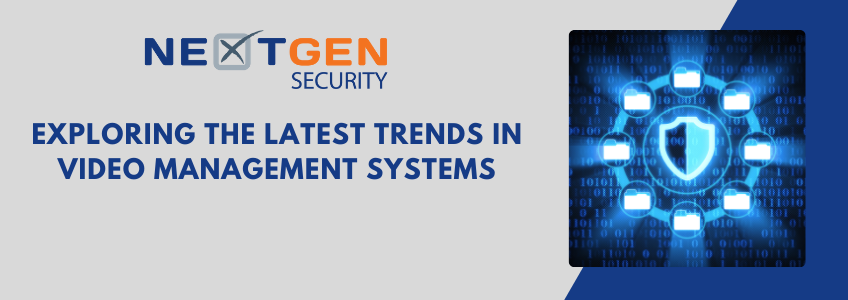The video surveillance market is booming as new capabilities and transformative technologies continue to shape and reshape this sector. According to Fortune Business Insights, the global video surveillance market size is poised for significant growth, with a valuation of USD 19.12 billion in 2018 and projected to reach USD 33.6 billion by 2026, growing at a CAGR of 6.8% during the forecast period 2019 to 2026.
Artificial intelligence (AI) and advanced analytics are being much more widely adopted in a variety of applications. This, coupled with a swift migration to cloud-based solutions are resulting in highly scalable, yet more sophisticated, video infrastructures.
In addition, enterprise-level Video Management Systems (VMS) are staying in step with new third-party technologies, such as AI and smart edge devices. VMS vendors recognize the need to innovate and integrate with new technologies to stay competitive. We at NextGen partner with industry-leading VMS vendors to deliver the best possible solutions for our customers.
VMS should come complete with video capabilities to ensure it can handle a growing volume of video data as users expand their systems. In today’s security landscape, in order for VMS to deliver a true enterprise solution, it needs strong basic video management features, and advanced analytics capabilities should be well-equipped to support a rich array of third-party software and hardware applications.
Traditionally, some of the most mounting challenges in video surveillance deployments have been reliability, interoperability, and scalability. To meet customer demands, today’s VMS architecture must be robust, flexible, and futureproof to give users the peace of mind that they can rely on them both now and well into the future. To that end, they should be able to accommodate new technologies and integrate further applications to respond to new threats and meet new operational challenges.
A VMS that can integrate video, access control, audio, and other disparate systems into a single platform simplifies security management while also increasing effectiveness and reducing operating costs. It’s important to keep in mind that the ability to give context to data using AI-powered alerts and receiving alarms from other systems such as access and intruder systems is essentially why VMS serves as the hub of a security control room.
Cloud integration also continues to push the video surveillance sector ahead. As recently reported in Forbes: The integration of cloud technology in video surveillance marks a significant departure from the conventional reliance on localized servers and infrastructure. The journey to incorporate cloud technology into video systems has been complex, filled with both challenges and transformative benefits. Bandwidth remains a key concern, given the intense data requirements of real-time, high-definition video streaming.
Still, it is important to understand the advantages of cloud solutions as well. They offer scalable, adaptive solutions that allow organizations to evolve alongside changing business and security needs. With AI-driven analytics becoming a central feature of cloud platforms, users can process vast data volumes more efficiently, yielding actionable insights for security and business intelligence.
In the next three blogs in this, our Revolutionizing Surveillance blog series, we will highlight: How NextGen’s Video Management Systems Cater to Diverse Industries; Leveraging Video Management Systems for Operational Efficiency; and Navigating the Cloud: The Role of NextGen’s Video Management Systems in Cloud-Based Security.

